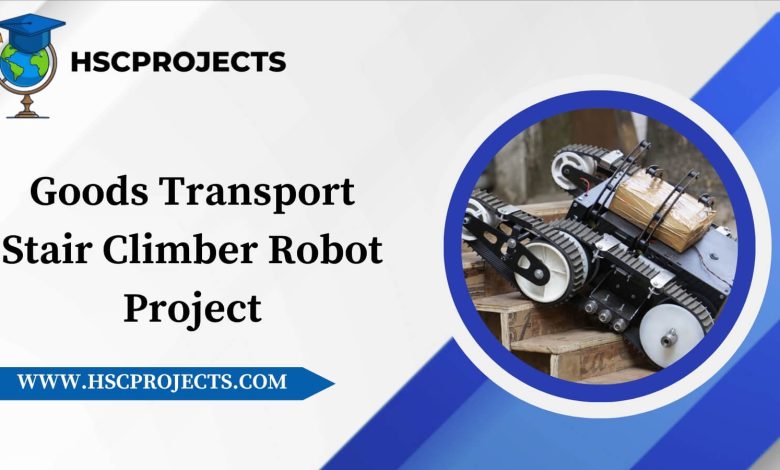
Goods Transport Stair Climber Robot Project
In the realm of robotics, one of the most significant challenges has been developing machines capable of navigating complex and rugged environments, especially when it involves transporting goods. The Goods Transport Stair Climber Robot represents a leap forward in this domain, offering an advanced solution for moving items across various terrains, including the arduous task of climbing stairs.

Understanding the Stair Climbing Robot
This Stair Climber Robot is engineered to overcome the limitations of traditional wheeled and tracked robots, which struggle with vertical obstacles and uneven surfaces. It incorporates a unique dual-track design coupled with retractable arms specially designed for stair climbing and navigating rough terrains.
Key Features of the Stair Climbing Robot
- Tracked Design: The robot’s tracked design allows it to move smoothly over uneven surfaces, making it ideal for various types of terrain.
- Dual Retractable Tracked Arms: These arms are the core feature that enables the robot to climb stairs and large obstacles efficiently.
- Soft Object Gripping: Equipped with gripper arms designed for soft object gripping, the robot ensures that the cargo isn’t damaged during transport.
- Smart Object Gripping: An onboard pressure sensor activates the gripping mechanism, allowing for intelligent handling of objects.
Operational Mechanism
The robotic vehicle operates via a motorized tracked arrangement, allowing for robust movement and agility. It’s controlled remotely through a wireless system, typically an RF transmitter and receiver, ensuring that the operator can guide it from a safe distance.
The robot’s movements are powered by high-torque DC motors, controlled via a microcontroller and motor drivers for precise operation. The gripper arms, driven by additional motors, are designed for soft gripping, minimizing the risk of damaging goods during transport.

Components of the Stair Climber Robot
- Motors: High-torque motors for movement and additional gripper motors.
- Microcontroller: Typically an Atmega or similar, serving as the brain of the robot.
- Sensors: Pressure sensors for smart gripping and other navigational aids.
- Communication Modules: RF transmitter and receiver for remote operation.
- Tracks and Gripper Arms: Rubber tracks for movement and specially designed arms for gripping and carrying.
Advantages of the Stair Climber Robot
- Versatility: Can navigate a variety of terrains, from smooth floors to rugged outdoor landscapes.
- Efficiency: Reduces the time and effort required to transport goods, especially in multi-level environments.
- Safety: Minimizes the risk of injury by handling tasks that would be dangerous or strenuous for humans.
In order to download the PDF, You must follow on Youtube. Once done, Click on Submit
Follow On YoutubeSubscribed? Click on Confirm
Download Goods Transport Stair Climber Robot Project PDF






